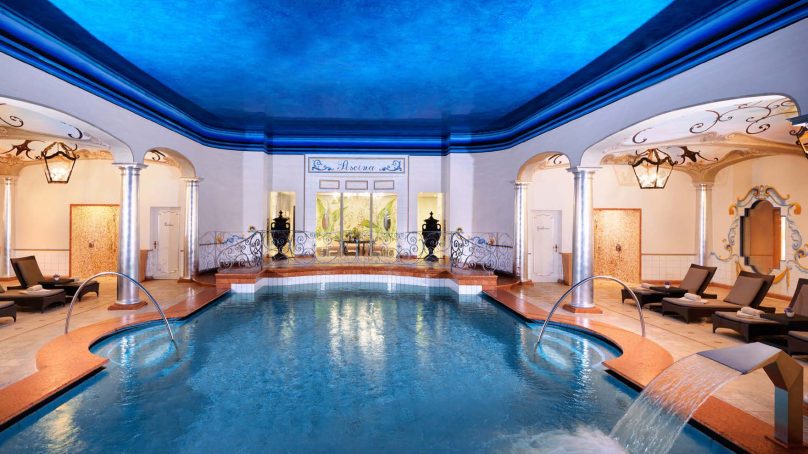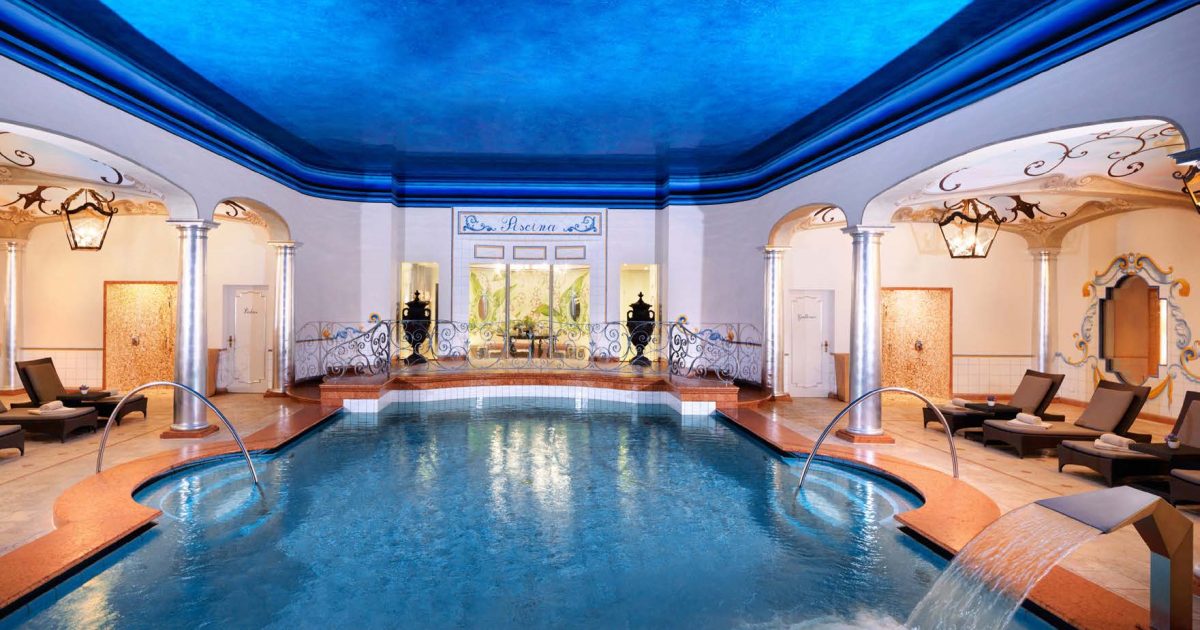According to the Global Wellness Institute, wellness tourism is projected to reach almost USD 1 trillion by 2022. The exponential growth of this industry is driving hospitality establishments around the globe to increase their budgets and sharpen their focus on their spa facilities, with a view to making them a key attraction in their properties. Design will play a major role in taking these important facilities to the next level. HN donned a bathrobe to find out more…


In-demand features
According to Joe Tabet, managing director of JT+Partners – an innovative brand in architecture, master-planning and integrated design practices – spas, fitness and wellness facilities have become increasingly popular with leisure and business travelers alike. Clients expect their themes, design and layouts to be expansive, relaxing, and calming. Also, given rising global awareness about environmental and social sustainability, preferred materials are likely to be local, organic and low-maintenance. Other aspects of design proving popular are the color green, natural, dim and concealed lighting, simplicity and ‘back to nature’ themes. Tabet explained that there are several factors influencing the spa, fitness and wellness industry, from the new generation of travelers and state-of-the-art technology to awareness about health and well-being, and heightened sensitivity to sustainability, environmental and social issues. “Each hotel brand’s spa has its own unique selling point and theme,” he said. “However, the hotel’s location, demographic trends and respect for local culture, tradition and beliefs will also influence the design, specifications and features of the spa.”
Revenue generators
Tabet added that given the growing market share that wellness is attracting, it’s no surprise that spa, fitness and wellness facilities rank among the top highlights of hotels and resorts’ operations. “The increased growth in leisure and wellness tourism will direct hotel brands to include ongoing investments in spa, fitness and wellness facilities in the business model for their hotel and resort developments,” he said. One of the targets of the booming global hotel industry, Tabet noted, was to attract the new demographic groups of international travelers, (namely Generation Y and Generation Z), who are very much into health awareness and well-being.

Managing Director
JT+Partners
Personalized wellness
According to Francesca Vittori, director of experiential spaces at at Design Group Italia, a design firm with offices in Italy, the USA, and Iceland, hotels around the world are striving to offer their guests a seamless and multi-sensorial experience throughout their entire stay, so that the hotel itself becomes an experience and not just a sleepover. Design Group Italia is behind the experience of the Blue Lagoon, Iceland, whose spa, The Retreat, won Condé Nast Traveler 2019 Readers’ Choice Awards, alongside many other accolades, as one of the top resorts in Europe. “They (hotels) become hybrid spaces with multifunctional services including accommodation, entertainment, restaurants – and, of course, the spa,” she explained. Spas are now perceived as healing retreats for stressed-out urban communities. Leading hotels are also adding healthenhancing elements to their new or existing structures, such as when the hotel-room design becomes more bathroom-centered. Sometimes it is as an extension of the spa experience, while, on other occasions it becomes an in-room spa experience of sorts – a substitution, if there is no spa at the premises. Vittori explained that personalized wellness is also on the rise, which, for spas, means striving to offer each customer the most suitable form of wellness, such as a fitness kit in the hotel room instead of gym for shy or busy guests. She cautioned that hyper-personalization is a trend that businesses can’t afford to ignore, especially in the health and beauty sectors. “In hospitality, we see more and more tailored health services, like personal wellness concierges, for example, so that the complete set of services can be offered during the stay, from specific spa treatments and nutrition to pillow menu, depending on your sleeping profile.”

Director
experiential spaces
A segmented market
Daria Svirid, experiential spaces designer at Design Group Italia said that since the hospitality market is segmented, a variety of methods are being created, aimed at providing it with an overarching complete experience for various demographics and lifestyles. “Lately, we’ve seen openings of spas for kids and their mothers, for example, and luxury stay-over offers for wealthy off-track nomads, as well as a huge variety of lifestyle resorts of all kinds,” she said, adding: “Spas also cater to our growing need to amuse ourselves – and to enter into a deeper connection with the customer on any level. For businesses, they can also be a scalable option; a complete facility is not necessarily needed – sometimes a single, but unique therapy can be enough to go viral.”

Experiential spaces designer
Design Group
An expert’s tip
Soraya Jouzy, beauty and wellness expert behind Pearl Tree, a company that specializes in beauty, wellness and lifestyle within the Middle East and British Indian Ocean, gives HN an insight into spa designs from a more practical perspective “On a global scale, wellness and health are extremely trendy concepts. The GCC wants to position itself as a wellness hub in the region, therefore it is developing grandiose spas. Owners are realizing spas’ business value and are allocating bigger spaces to these facilities compared to those in Europe, for example. To sum it up, spas are emerging in the region, but are moving from being an amenity to a true revenue-generating asset. When it comes to trends, we will be seeing more standalone spas within hotels, but operating independently, in addition to membership clubs. We will also see new F&B experiences within spas. For instance, the bar-like offering, such as the one at the W Dubai – The Palm, where makeup, nails and masking can be done whilst clients enjoy a beverage in a social and fun atmosphere. On another level, we will see regional Islamic influence continue in the design, technology sensors and lighting, as well as holistic approaches impacting the design of treatment rooms.”

Beauty&wellness expert
Pearl Tree
10 spa design trends for 2020
1. Back to basics, such as nature, rituals and local traditions
2. Smart connectivity, with the help of devices for wellness intelligence
3. Unusual experiences, with the idea of sharing on social media
4. Hyper-personalization and tailored treatments and experiences
5. Innovation in products and experiences
6. Wellness architecture, with a healthier living environment
7. Healthier indoor retreats
8. Omni-channel wellness experience: digital, behavioral and physical services working
together for a unique experience
9. Rise of wellness collection spaces
10. Rise of urban wellness retreat spaces













